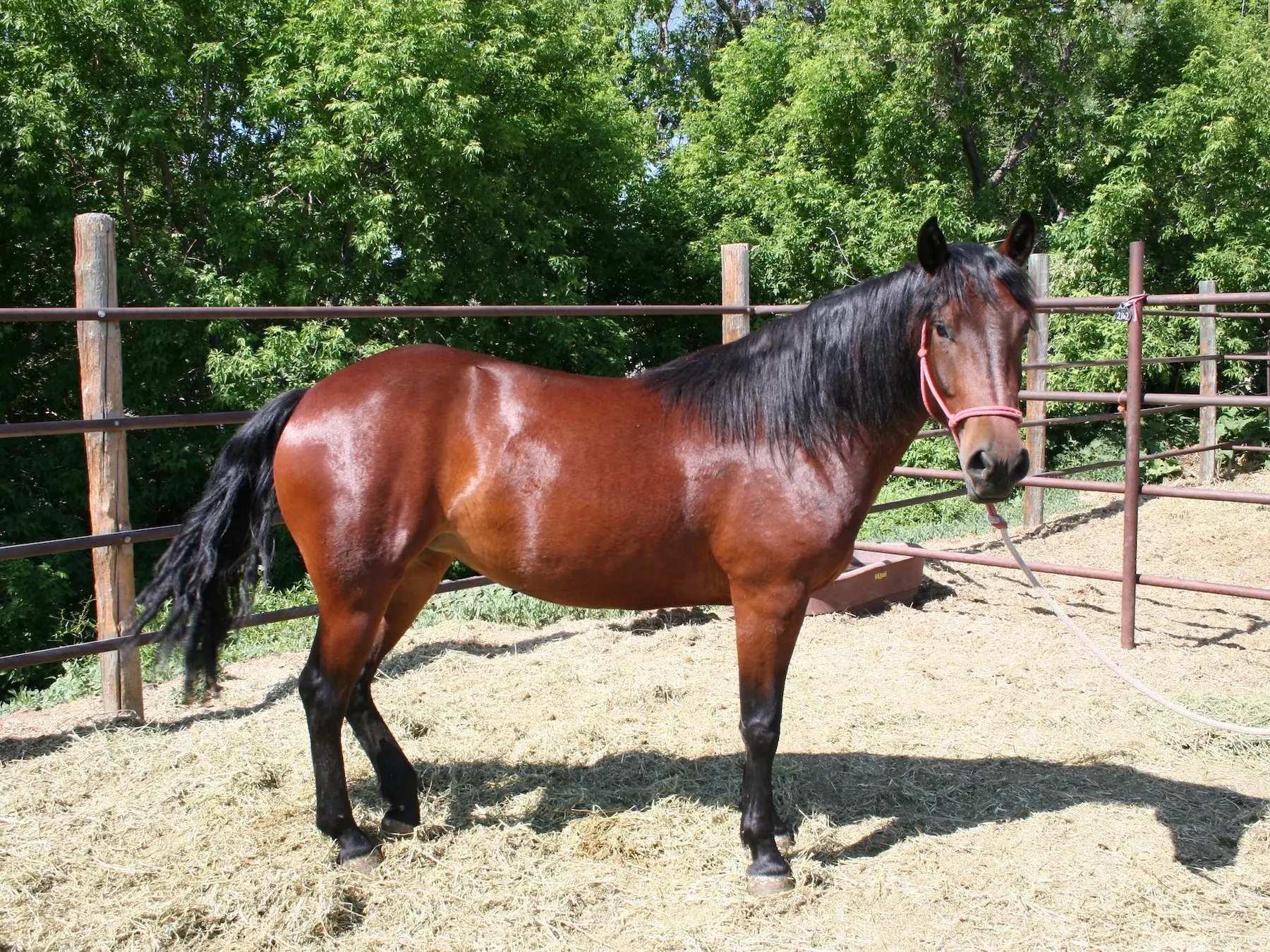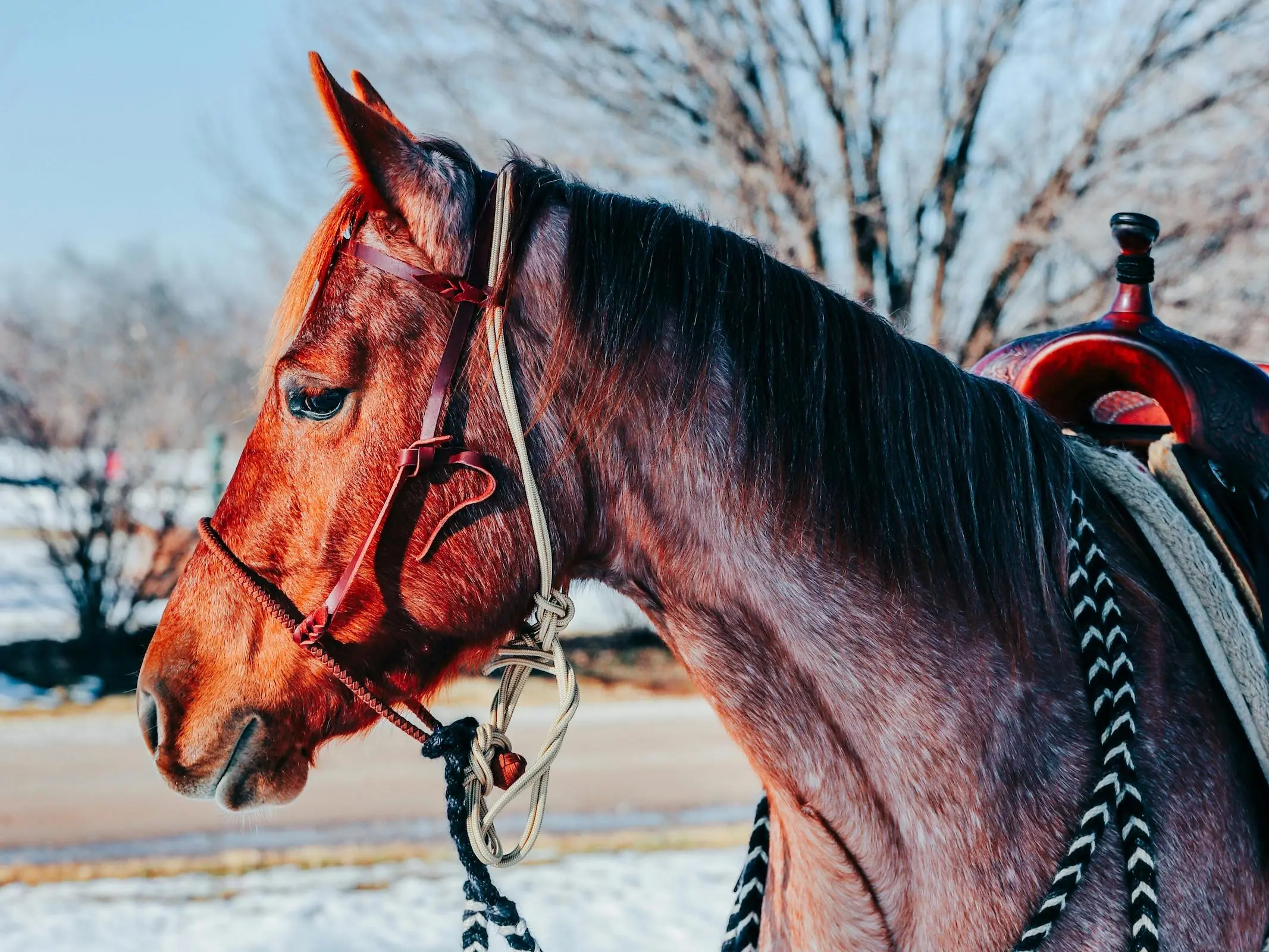
There are four base horse coat colors, black, chestnut, bay and brown. These four base colors along with various modifiers and dilutions provide us the vast spectrum of solid horse coat colors. Black and bay coats are caused by the agouti gene and it is the Dominant agouti allele that causes black hairs to be restricted to the points. Perhaps one of the most well known horse colors, bay comes in a wide variety of different shades. All of them can be visually identified by their black points (mane, tail and legs).
Amazing Agouti
The agouti gene is what controls the limiting of black hairs, allowing for the range of body colors we call bay, from reddish to almost yellow. There are no genetic differences between most of the bay types, although dun modified wildtype bay was possibly a color found in ancestral horses.
Bay Breeds
Bays are commonly found almost all breeds but there are very few exclusively bred for the color. he Cleveland Bay, Bardigiano and Clydesdale are all perhaps best known for their bold red coats.
Bay Shades
There is a wide variety of bay colors which vary a great deal by animal and breed. For the most part, they fall under the generalized categories below, which will have some crossover and regional variation.
 Mahogany Bay
Mahogany BayThe darkest of the bay shades, the body coat ranges from almost black to a deep reddish brown. Mane and tail are black.
 Blood Bay
Blood BayThe most fiery of the bay shades, blood bays range from almost purple to a deep blood red, mane and tail are black.
 Copper Bay
Copper BayProbably the brightest of the bay colors, copper bays range from light to dark reddish orange, mane and tail are black.
 Standard Bay
Standard BayThe most common bay coloration, standard bays display a range of deep reddish brown shades, mane and tail are black.
 Golden Bay
Golden BayThe lightest shade of bay and not as common, golden bays are pale reddish gold shades of brown, mane and tail are black.
 Wildtype Bay
Wildtype BayConsidered true bays, with a deep red to golden coat and black points. Black leg markings only extend up to the pastern.
Modifiers on Bay Coats
The bay modifier can also work with other modifiers, adding to the rainbow of equine colors.
 Pangare Modifier
Pangare ModifierMealy is expressed by a lightening of the animals soft spots, generally the muzzle, belly, flank, elbow and eyes.
 Sooty Modifier on Bay
Sooty Modifier on BayThought to be a form of camouflage, the sooty modifier causes black hairs to grow along the topline and points.
 Sooty Modifier on Buckskin
Sooty Modifier on BuckskinSooty buckskins are bay with a single dose of the cream and sooty dilution genes. This can produce lovely dappling on the coat.
Dilutions on Bay Coats
In addition to other modifiers, bays can also be affected by dilution genes. Creating some of the most beloved equine coloring, including palomino, buckskin and dun.
 Single Cream Dilution
Single Cream DilutionSoft golden in color with dark points, the buckskin is a result of a single dose of the cream dilution gene on a bay coat.
 Double Cream Dilution
Double Cream DilutionPure white with pink skin and blue eyes, perlinos are a result of a double dose of the cream dilution gene on a bay coat.
 Dun Dilution
Dun DilutionBay with a dun dilution is probably the most common shade of dun, creating a range of yellow coats, mane and tail are dark.
 Silver Dilution
Silver DilutionThe silver dilution only affects black hairs, creating a bay with flaxen mane and tail dark chocolate brown points.
 Champagne Dilution
Champagne DilutionChampagne is not as strong on a bay coat, diluting the body to a shade of golden red and leaving the mane, tail and points dark brown.
White Patterns on Bay Coats
Bay animals can be affected by all white patterns and the bay coloring actually creates incredibly colorful spotted animals (think tri-colored pintos).
 Grey White Pattern
Grey White PatternWhen affected by the grey modifier, bays are born brown and grey as they age. In early stages they are called rose grey.
 Appaloosa White Pattern
Appaloosa White PatternAn expression of the leopard complex, appaloosa white patterns display a huge variety of spotted patterns.
 Pinto White Pattern
Pinto White PatternAn expression of the leopard complex, appaloosa white patterns display a huge variety of spotted patterns.
 Roan White Pattern
Roan White PatternThe roan white pattern on a bay coat creates a pinkish color but the mane, tail and points remain black in color.
 Rabicano White Pattern
Rabicano White PatternThe rabicano white pattern on a bay coat is similar to roan, a skunk tail is the best way to distinguish rabicano.